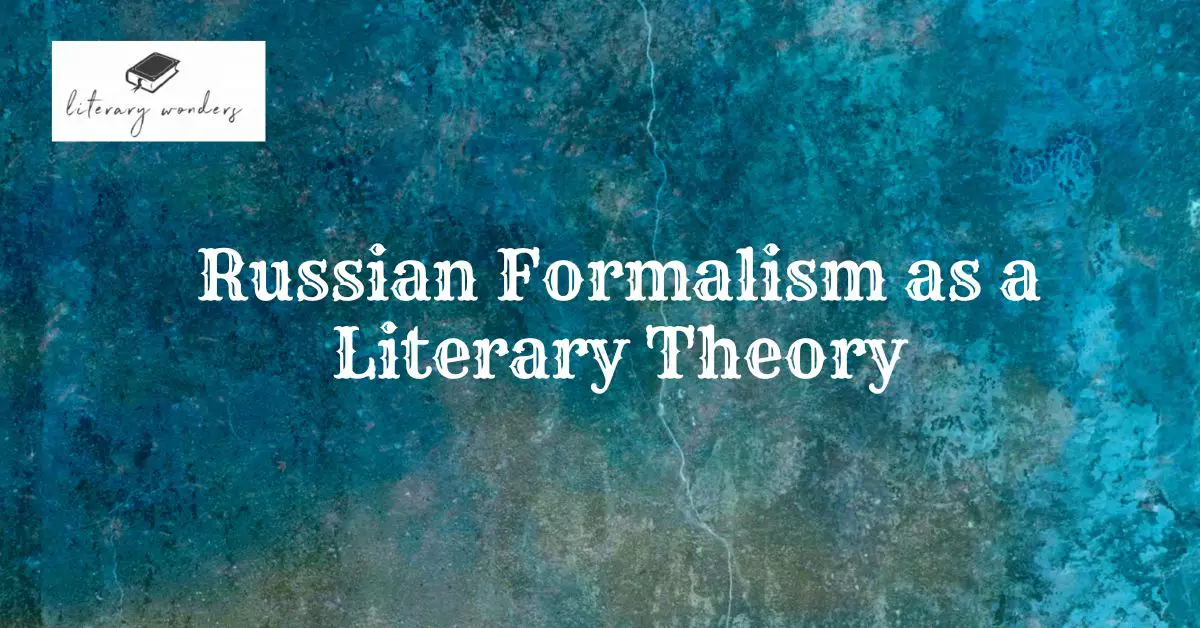Introduction
Russian Formalism is an influential literary theory that pays particular attention to the form and structure of works, rather than the author’s background or other external factors. As a student of literature, it can be helpful to understand what the Formalists were talking about and how their literary criticism can help you appreciate literature better.
In this article, I will explain some of the ideas behind Russian Formalism as well as how it can be applied in your own life as you read or analyze literature from all genres and eras. In order to understand literature better, you should familiarize yourself with the literary theory, Russian Formalism. It’s one of the most influential literary theories of the 20th century.
Based on close readings of individual works, Russian Formalism focuses on the texts themselves rather than external factors such as autobiography of the author, social, cultural and economic factors. It also covers what comes before or after in other pieces of writing from that same author, and that’s why it’s so useful in helping you truly understand what a piece of literature means on its own terms.
Definition of Russian Formalism
Russian formalism is a literary theory that can help you better understand literature in a new way. The term “Russian Formalism” was created by scholar Viktor Shklovsky to define one branch of literarily which began at the time around 1917. Russian formalists believed that all poetic language should have strictly constrained language, syntax, vocabulary. Moreover, it should also provide continual tension between expectation and fulfilment; they were very much in favor of techniques like puns, reversals, etc. that forced the reader to do more work than just following along with simple narrative or description.
A good example of this would be the story The King’s Breakfast written by Nikolai Gogol, where there are many jokes embedded in what may seem like boring descriptions about breakfast. The meaning behind these jokes has nothing to do with anything except for how certain words sound similar to others when pronounced aloud or written down-and-most importantly: it forces readers to think outside the box and figure out meanings themselves.
They used devices such as double entendres and rhetorical questions to create ambiguity while simultaneously forcing the reader to make sense of things. To use an analogy, Russian Formalism makes art so difficult that people will want to master it before making their own art because otherwise, they will be able to compare their own unfinished pieces to ones that have been fully completed.
Examples from Literature
Formalism was created by a group of Soviet poets and critics who felt that literature should be appreciated purely for its formal qualities. They rejected personal or extraneous interpretations, especially those informed by the political, cultural, and economic factors of a work’s creation. Today, this theory remains primarily focused on examining how poetry and fiction works on their own terms.
For example, Vladimir Propp’s analysis of Pushkin’s fairy tale in Morphology of the Folktale is an example of a formalist approach to literature. He breaks down the story into thirty-one acts with set scenes and functions without imposing any of his own interpretation onto it. His analysis is completely objective as he just describes what happens. There are other examples such as Trubetzkoy’s essays on poetry where he examines poetry as sound rather than meaning.
Conclusion
In summary, the goal of Russian Formalism is to study art forms exclusively from a formal perspective. It asserts that external influences (like history, culture, and politics) do not affect the structure and form of the piece.
Suggested Readings

